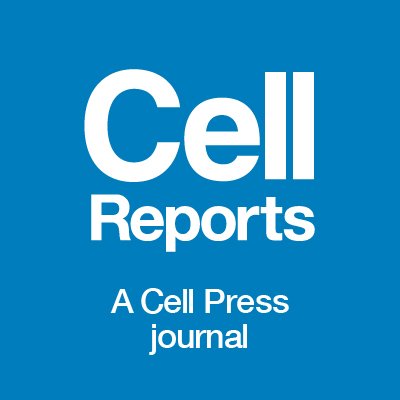
Cell Reports
@CellReports
Followers
143K
Following
115
Media
2K
Statuses
16K
Cell Reports is an open-access journal at Cell Press, publishing weekly. Tweets by Cell Reports editors.
Cambridge, MA, USA
Joined July 2011
Genetic and chromatin regulation of Pvt1 monoallelic expression
cell.com
Luong et al. reveal how genetic variation affects autosomal random monoallelic expression (aRME) of Pvt1 via differential TFAP2a binding. The stochastic allelic choice for aRME is propagated through...
0
3
18
Genomic insights into karyotype evolution and adaptive mechanisms in Polygonaceae species
cell.com
Liu et al. report chromosome-level genomes of 11 species across 10 Polygonaceae genera (including four previously published genomes), which encompass diverse habitats. Integrating genomic and...
0
0
6
Spain’s own Dolores Corella (@UV_EG) will speak at @CellSymposia #CSAging2026 Don’t miss her insights into genetic epidemiology and aging. Join the program, abstract deadline June 5. https://t.co/b08LfOH3EZ
0
0
6
DHHC enzymes in alphavirus glycoprotein acylation: A target for broad-spectrum antiviral therapy
cell.com
Li et al. reveal how the spike proteins of Getah virus, an arthropod-borne alphavirus, are modified by fatty acid attachment. They identify the acyltransferase DHHC11 as a key host enzyme required...
1
1
6
Feedforward miR-181d degradation modulates population variance of methyl-guanine methyl transferase and temozolomide resistance
cell.com
Singh et al. show that TMZ treatment in glioblastoma induces ATR- and PNPT1-dependent degradation of miR-181d. Loss of miR-181d de-represses PNPT1, establishing a feedforward loop that amplifies...
1
0
4
Endothelial IL-36 receptor activation promotes vascular stability to limit pathological microvessel permeability in the CNS
cell.com
Only a small number of barrier-enhancing factors have been discovered to specifically increase barrier integrity, enhance vessel stability, and make vessels resistant to fluid leakage. Here, Fahey et...
1
0
12
CA2/3-dependent stability of frontal mnemonic representations predict episodic deficits in human amnesia
cell.com
Miller et al. use fMRI to demonstrate that human hippocampal CA2/3 subfield damage results in retrograde autobiographical amnesia and destabilized frontal autobiographical mnemonic representations....
0
0
9
Patient-derived organoids to study glycosylation dynamics during gastric disease
cell.com
Santos-Ferreira et al. established a gastric organoid biobank from normal, adjacent, and tumor tissues to assess glycosylation fidelity. Organoids recapitulate tissue-specific glycosylation, preserve...
1
3
29
Vascular Lamb1 guides the migration of retinal microglial precursors via Itga6-Rac1 signaling
cell.com
Zhan et al. show that blood vessels serve as a migratory scaffold directing retinal microglial precursor infiltration into the developing retina. Vascular Lamb1 signaling orchestrates this precise...
1
3
15
Inducing ferroptosis to impede metastasis by inhibiting the calcium channel TRPC6
cell.com
Dimitrov et al. report that the calcium channel TRPC6 enables TNBC cells to evade ferroptosis by repressing c-Myc to sustain glutathione levels. This channel has a causal role in metastasis, and its...
1
5
31
Diverse defense systems and prophages in human-associated Bifidobacterium species reveal coevolutionary “arms race” dynamics
cell.com
Despite bifidobacteria playing essential roles in human and infant health, large-scale studies of their interactions with phages are scarce. Docherty et al. uncover a diverse repertoire of antiviral...
1
2
11
ID1 boosts antiviral immunity by countering PRMT5-mediated STING methylation
cell.com
Li et al. report that ID1 sustains STING activation and innate immunity by blocking PRMT5-STING binding, thereby preventing PRMT5-mediated methylation at Arg281 of STING. The PRMT5 inhibitor EPZ015...
1
5
24
A retrograde, non-canonical integrated stress response cascade maintains synaptic strength under amino acid deprivation
cell.com
Mori and colleagues show that the integrated stress response (ISR) cascade triggered in the postsynaptic muscle of the Drosophila larval neuromuscular junction (NMJ) by acute amino acid restriction...
0
5
22
Therapeutic VEGFC treatment provides protection against traumatic-brain-injury-driven tauopathy pathogenesis
cell.com
How traumatic brain injury (TBI) mechanistically contributes to neurodegenerative disease remains poorly understood. Marco et al. find that therapeutic viral vector-based delivery of VEGFC recupera...
1
2
13
Fat knows its limits: Creatine kinases keep adipocytes in check
cell.com
The prevalence of obesity has led to significant interest in identifying the molecular mediators of adipose tissue expansion. In a recent issue of Cell Reports, Renzi and colleagues reveal a new...
0
11
35
The pan-cancer mutational landscape of MLL3 and its impact on prognosis and immunochemotherapy
cell.com
MLL3 is frequently mutated across cancers. Liu et al. reveal that these mutations are associated with enhanced immune infiltration, predicting improved survival and immunochemotherapy response in...
2
9
30
Genetic mapping and predictive modeling of paralog synthetic lethality
cell.com
Synthetic lethal paralogs have long been known, yet most paralog interactions are untested. Flister et al. report a screen of 36,648 known human paralog pairs. These data combined with a meta-analy...
0
0
13
Situating the salience and parietal memory networks in the context of multiple parallel distributed networks using precision functional mapping
cell.com
(Cell Reports 44, 115207; January 28, 2025)
0
1
13
Nuclear-lamin-guided plastic positioning and folding of the human genome
cell.com
Wang et al. systematically depicted the lamins-guided 3D epigenome in human stem cells and demonstrated that lamins not only serve as key regulators of chromatin-NL tethering and large-scale genome...
0
7
50
Monocyte-derived cells promote transient insult-induced brain injury by enhancing CD8+ T cell response
cell.com
Zuo et al. show monocyte-derived cells as key contributors to transient insult-induced brain injury. These cells infiltrate lesions, exhibit antigen-presenting features, and promote CD8+ T cell...
0
4
17



















